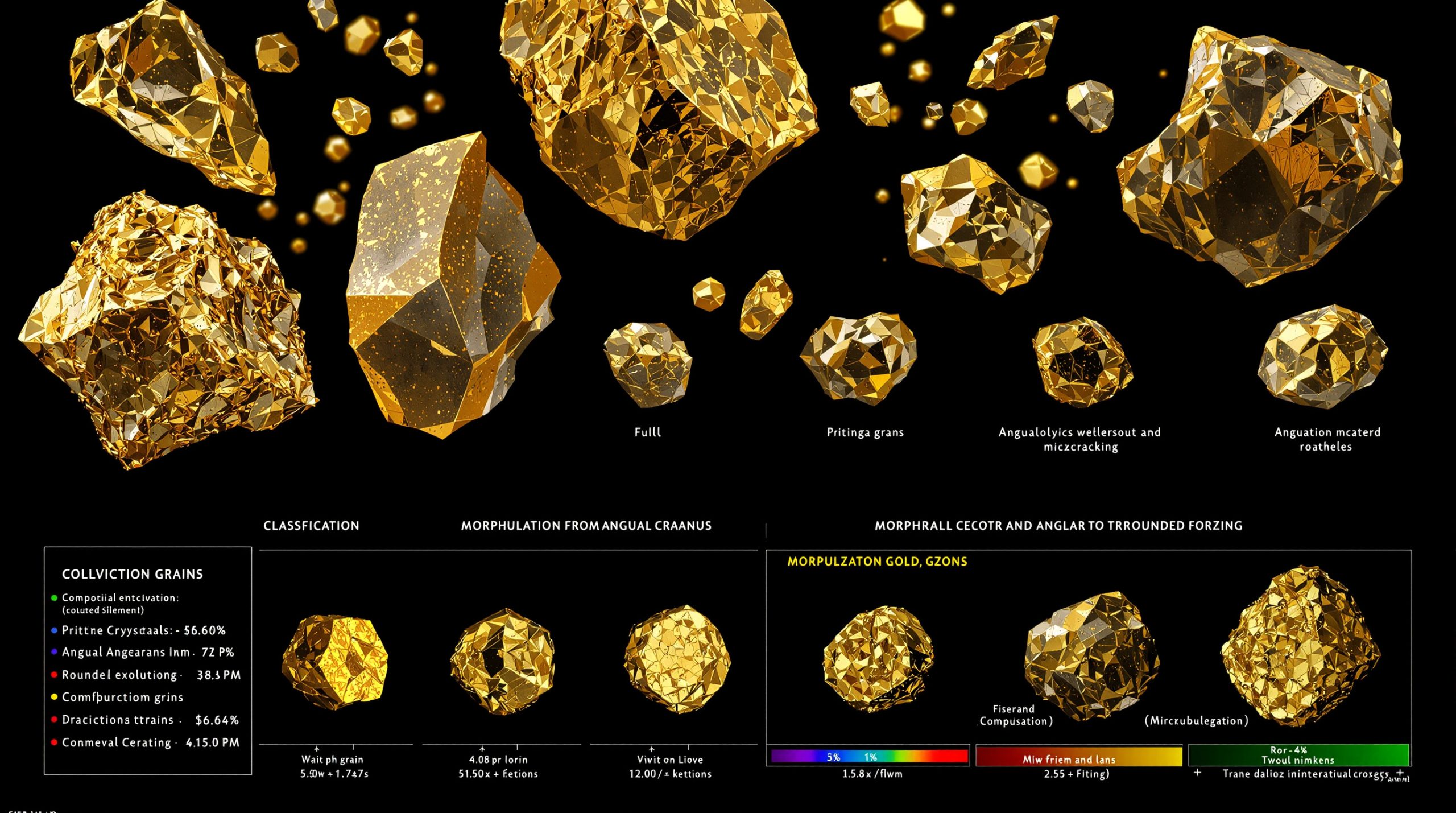Understanding Metals Leasing Economics: How Precious Metal Financing Works
The Fundamental Structure of Metal Leases
Metal leasing represents a sophisticated financial arrangement where businesses borrow physical precious metals instead of purchasing them outright. Unlike traditional loans, these transactions involve the temporary transfer of actual commodities—gold, silver, platinum, or palladium—with the borrower paying a lease rate (essentially interest) for the privilege.
The core principle remains straightforward: the borrower must return the same quantity and quality of metal at the end of the lease period, regardless of market price fluctuations during that time. This structure allows businesses to access valuable materials without committing significant capital to ownership.
Lease durations typically follow standardized timeframes with 1-month, 3-month, 6-month, and 12-month terms being most common, though custom arrangements can be negotiated for specific business needs.
Key Participants in the Metal Leasing Market
The precious metals leasing ecosystem involves several distinct participant categories:
Metal Owners/Lenders: This group includes central banks with substantial gold reserves, investment funds with metal allocations, mining companies with production inventory, and bullion banks maintaining significant metal holdings. These entities generate additional yield on their metal assets through leasing.
Borrowers: Industrial users requiring metals for manufacturing processes, jewelry manufacturers needing working inventory, mining companies managing production hedges, refiners processing materials, and traders implementing various market strategies comprise the primary borrower base.
Intermediaries: Bullion banks and specialized trading firms facilitate transactions between owners and end-users, often maintaining their own leasing books and earning spreads between borrowing and lending rates.
Each participant plays a specific role in maintaining market liquidity and efficient allocation of metal resources across global supply chains.
Differentiated Pricing Structure
Perhaps the most misunderstood aspect of metals leasing economics is the highly individualized pricing structure. There is no single "gold lease rate" or "silver lease rate" that applies universally across the market. Instead, rates are customized based on multiple factors:
Borrower Creditworthiness: Central banks receive the most preferential rates due to their sovereign status and impeccable credit. At the opposite end of the spectrum, privately-owned jewelry manufacturers might pay rates comparable to credit card interest rates due to their relative credit risk.
Lease Duration: Longer-term commitments generally command different pricing than short-term arrangements, with rate curves reflecting market expectations about future metal availability and interest rates.
Market Conditions: During periods of tight physical supply, lease rates can spike dramatically, particularly in specific geographic markets where metal shortages occur.
Relationship Status: Established clients with longstanding relationships typically receive more favorable terms than new market entrants.
Volume Commitments: Larger metal volumes generally qualify for preferential pricing due to economies of scale in transaction management.
This complex, relationship-driven pricing structure explains why publicly available "implied lease rates" often fail to reflect actual transaction terms in the market.
Why Do Companies Choose to Lease Rather Than Purchase Metals?
Financial Advantages for Industrial Users
Industrial companies derive several financial benefits from leasing precious metals rather than purchasing them outright:
Capital Preservation: By leasing rather than buying, companies avoid immobilizing substantial working capital in metal inventory. For industries where precious metals represent a significant production input cost (electronics, automotive catalysts, jewelry), this capital efficiency can dramatically improve financial flexibility.
Balance Sheet Optimization: Leasing arrangements can improve key financial metrics by reducing fixed assets and enhancing liquidity ratios. This optimization often translates to better financing terms for other business operations.
Tax Efficiency: In many jurisdictions, lease payments qualify as deductible operating expenses, offering potential tax advantages compared to asset purchases that must be capitalized and depreciated over longer periods.
Hedging Capability: Leasing provides natural protection against price volatility by allowing businesses to pass through metal price increases to their customers without having taken the ownership risk of the metal itself.
These financial advantages become particularly compelling during periods of high metal prices or economic uncertainty.
Operational Benefits
Beyond pure financial considerations, metal leasing offers operational advantages that appeal to manufacturing businesses:
Supply Chain Flexibility: Companies can adjust their leased metal quantities based on production needs, scaling up during peak periods and reducing exposure during slower cycles.
Risk Transfer: Leasing effectively shifts price risk to the lessor during the lease period, protecting the manufacturer from adverse price movements while materials are in process.
Working Capital Management: By converting what would otherwise be a fixed asset investment into an operational expense, businesses can allocate capital to growth initiatives, research, or market expansion.
In-Process Inventory Coverage: For refiners, smelters, and manufacturers, leasing provides coverage for materials during production cycles without requiring ownership of the physical metal throughout the entire process.
This operational flexibility proves particularly valuable in industries with cyclical demand patterns or volatile input costs.
Strategic Considerations
Strategic factors also influence the decision to lease rather than purchase precious metals:
Market Timing: Leasing allows companies to participate in metal markets without making long-term price commitments, enabling more strategic entry and exit decisions based on market conditions.
Speculative Positioning: Trading operations can implement various market strategies without the full capital outlay required for outright purchases, effectively leveraging their market exposure.
Production Continuity: Mining companies use leasing to meet delivery commitments during production disruptions, maintaining customer relationships even when extraction volumes temporarily decline.
Future Production Leverage: Miners can leverage anticipated future production through lease arrangements, effectively monetizing reserves before they're extracted.
These strategic advantages explain why metal leasing remains a preferred financing strategy even for companies with ample resources to purchase metals outright.
What Factors Determine Metal Lease Rates?
Market Supply and Demand Dynamics
Physical market conditions play a critical role in determining metal lease rates:
Physical Metal Availability: Periods of tight supply generally lead to higher lease rates as lenders command premium returns for scarce material. Metal availability can vary substantially across different markets simultaneously.
Geographic Imbalances: Supply and demand differentials between major trading centers (London, New York, Shanghai) create lease rate variations. When demand is stronger in one region than another, metal flows create temporary imbalances that affect leasing costs.
Market Friction: Transportation costs, shipping delays, and logistical challenges between markets can widen regional lease rate differentials. These frictions often manifest in short-term rate spikes that quickly subside once metal flows normalize.
Seasonal Factors: Predictable demand patterns in jewelry manufacturing (pre-holiday production) and industrial cycles can influence lease rate seasonality in certain metals.
Physical market dynamics typically drive short-term rate fluctuations rather than indicating fundamental market changes.
Financial Market Influences
Broader financial market conditions provide the foundation for metal lease rate structures:
Interest Rate Environment: The general level of interest rates in major economies influences the baseline cost of leasing metal, as lenders factor their alternative investment opportunities into pricing decisions.
Currency Fluctuations: Exchange rate movements affect cross-border leasing economics, particularly for transactions between different currency zones.
Forward Price Curves: Contango (higher future prices) or backwardation (lower future prices) in futures markets influences lease rate calculations, as lenders typically hedge their price exposure through these markets.
Opportunity Costs: The returns available from alternative investments determine the minimum rates lenders require to make metal available to the leasing market.
These financial factors provide the structural framework for lease rate formation before individual transaction factors are applied.
Risk Premium Components
Several risk-related premiums factor into final lease rate determinations:
Counterparty Credit Risk: The most significant variable in lease pricing is the borrower's creditworthiness. Lenders apply substantial premiums for higher-risk counterparties, explaining the wide rate differentials between central banks and private manufacturers.
Market Volatility Premium: During periods of extreme price volatility or market uncertainty, lenders demand additional compensation for the increased risk of counterparty default or operational disruptions.
Duration Premium: Longer lease commitments generally command higher rates to compensate for the extended risk exposure and reduced flexibility for the lender.
Regulatory Risk Factors: Changes in banking regulations, precious metals trading rules, or cross-border transaction requirements may be reflected in rate structures as lenders pass through compliance costs.
The combination of these risk premiums with base financial factors and physical market dynamics creates the highly customized rate structure observed in the metals leasing market.
How Do Lease Rates Serve as Market Indicators?
Signaling Market Tightness
Lease rate movements provide valuable signals about physical market conditions:
Elevated Lease Rates: When rates move significantly above historical averages, this often indicates physical metal scarcity or exceptionally high demand in specific markets. However, these signals must be interpreted carefully within context.
Lease Rate Spikes: Short-term rate spikes frequently signal temporary supply disruptions or demand surges rather than fundamental market changes. These spikes have occurred multiple times in silver markets in recent years, typically subsiding quickly as metal flows adjusted.
Persistent High Rates: When elevated rates persist over extended periods, this may reflect structural market changes or longer-term supply-demand imbalances that warrant closer analysis.
Experienced market participants distinguish between temporary friction-related spikes and more meaningful structural shifts in lease rate patterns.
Relationship to Price Movements
Lease rates can provide insights into potential price developments:
Leading Indicators: Changes in lease rates often precede spot price movements, as they reflect professional market participant positioning before retail investors perceive market shifts.
Market Sentiment Reflection: Rate patterns reveal how commercial users and financial intermediaries view near-term supply-demand balances, providing a window into insider market expectations.
Arbitrage Opportunities: Differences between lease rates and forward prices create trading opportunities that sophisticated market participants exploit, eventually bringing markets back toward equilibrium.
These relationships make lease rate tracking valuable for investors seeking early market signals, though interpretation requires substantial expertise.
Regional Market Intelligence
Geographic lease rate differentials provide additional insights:
Geographic Spreads: Differences in rates between major markets (London vs. New York vs. Shanghai) highlight regional supply-demand imbalances that may signal trading opportunities or supply chain disruptions.
Cross-Metal Relationships: Correlations or divergences between lease rates across different precious metals can reveal substitution effects or metal-specific dynamics worth monitoring.
Historical Pattern Analysis: Comparing current rate structures to historical precedents helps identify anomalies that may signal unusual market conditions requiring attention.
These regional indicators provide valuable context for interpreting broader market movements and potential gold price forecast directions.
What Are the Different Leasing Models and Structures?
Traditional Bank-Intermediated Leases
The most common leasing arrangements involve financial institutions as intermediaries:
Consignment Arrangements: Metal is placed at manufacturer facilities but ownership is retained by the bank until used in production. This structure provides maximum operational flexibility while minimizing administrative complexity.
Unallocated Positions: The borrower receives a claim on metal rather than specific bars, simplifying transaction mechanics and reducing storage and transfer costs.
Allocated Leases: In some cases, specific, identifiable metal is transferred to the borrower with a return obligation. This structure is less common due to its administrative complexity but may be required for certain applications.
These traditional structures remain the foundation of the metals leasing market, particularly for industrial users with ongoing production requirements.
True Physical Leasing
Some arrangements emphasize physical metal movement:
Physical Delivery Requirement: Actual metal moves from lessor to lessee, ensuring the borrower has immediate access to the specific material needed for operations.
Non-Fungible Returns: In rare cases, the same physical bars must be returned rather than equivalent metal. This arrangement is uncommon but may apply to museum pieces or historically significant items.
In-Kind Interest Payment: Some lease structures require fees paid in additional metal rather than currency, appealing to lenders seeking to increase their metal holdings.
These physical-focused structures typically involve higher transaction costs but provide greater certainty of material availability.
Hybrid Structures
The market has developed innovative variations to address specific business needs:
Lease-to-Own Arrangements: These structures include options to purchase the metal at the end of the lease term, potentially at pre-agreed prices.
Convertible Leases: Flexibility provisions allow conversion between different structures based on market conditions or business requirements during the lease period.
Collateralized Metal Loans: These arrangements combine elements of traditional loans with metal-backed security provisions, creating hybrid debt-lease structures.
These innovative approaches demonstrate how the metal leasing market continues to evolve to meet specialized business requirements and adapt to changing market conditions.
How Are Metal Leases Accounted For?
Balance Sheet Considerations
Proper accounting for metal leases presents unique challenges:
Lessee Accounting: Under current accounting standards, lessees typically recognize right-to-use assets and corresponding liabilities for longer-term metal leases, though specific treatment varies by jurisdiction and lease structure.
Lessor Accounting: Lessors generally continue recognizing the metal as an asset while recording lease income accrual, reflecting the temporary nature of the transfer.
Disclosure Requirements: Transparent reporting of metal lease obligations has become increasingly important as financial statement users seek better understanding of companies' exposure to commodity price fluctuations.
These accounting considerations influence how companies structure their leasing arrangements to achieve desired financial statement presentation.
Valuation Challenges
Metal lease accounting involves several complex valuation issues:
Mark-to-Market Adjustments: Companies must determine appropriate methodologies for accounting for metal price fluctuations during lease terms, particularly for long-duration arrangements.
Lease Rate Fluctuations: Changes in effective financing costs due to variable rate structures require systematic approaches to ensure accurate financial reporting.
Contingent Obligations: Accounting for potential additional costs or benefits embedded in lease structures (extension options, purchase rights, etc.) requires careful analysis and disclosure.
These valuation complexities often necessitate specialized accounting expertise to ensure compliance with relevant standards.
Tax Implications
Tax treatment of metal leases varies significantly:
Jurisdiction-Specific Treatment: Different countries apply varying tax approaches to metal leases, creating complexity for multinational operations.
Capital vs. Operating Classification: The tax treatment often depends on how the lease structure is classified, with different consequences for expense deductibility and asset recognition.
Transfer Pricing Considerations: For international leasing arrangements, proper documentation of arm's-length pricing becomes critical to avoid tax disputes across jurisdictions.
These tax implications frequently influence structural decisions when designing optimal metal leasing arrangements.
What Risks Exist in Metal Leasing Markets?
Market Risks
Participants in metal leasing markets face several market-related risks:
Price Volatility: Dramatic metal price changes during lease periods can create significant economic consequences, particularly if hedging strategies are imperfect.
Liquidity Constraints: During periods of market stress, finding counterparties willing to roll over expiring leases or provide new metal can become challenging, potentially forcing physical settlement.
Basis Risk: Divergence between physical and paper market prices can undermine hedging strategies, creating unexpected exposures despite apparent risk management efforts.
These market risks require sophisticated risk management approaches to mitigate potential adverse impacts.
Operational Risks
The physical nature of metal leasing creates operational challenges:
Delivery Failures: When physical metal isn't available when needed due to logistical disruptions or counterparty issues, manufacturing operations may be compromised.
Quality Discrepancies: Returned metal not meeting specified quality standards can create disputes and financial consequences for both parties.
Storage and Security Issues: Physical safekeeping challenges include theft risk, insurance costs, and proper verification of metal authenticity and quality.
These operational considerations necessitate robust processes and careful counterparty selection to minimize disruption risks.
Counterparty Risks
Financial relationships in leasing markets introduce several counterparty concerns:
Default Risk: The fundamental risk that borrowers may be unable to return metal when due, particularly if financial distress coincides with higher metal prices.
Settlement Risk: Timing mismatches in metal delivery and payment create temporary exposures that require careful management, especially in cross-border transactions.
Concentration Risk: Overexposure to specific counterparties may create systemic vulnerabilities if those entities experience financial difficulties.
Prudent risk management practices include counterparty diversification, appropriate collateralization, and systematic monitoring for investment risk flags that might signal potential problems.
How Do Bullion Banks Profit from Metal Leasing?
Revenue Streams
Bullion banks generate returns from metal leasing through multiple channels:
Lease Rate Spreads: The fundamental profit mechanism comes from the difference between rates paid to acquire metal (from central banks or large holders) and rates charged to end-users.
Transaction Fees: Banks earn additional revenue through charges for arranging, documenting, and managing leases, particularly for complex or customized structures.
Market-Making Activities: Related trading operations generate profits from bid-ask spreads in both leasing and associated metal markets.
Cross-Selling Opportunities: Metal leasing relationships often lead to additional financial services for clients, including hedging, foreign exchange, and traditional banking products.
These diverse revenue streams explain why metals trading operations at major banks have historically been highly profitable, with recent performance showing precious metals trading revenues at top investment banks increasing more than 60% in the first half of the year compared to the previous year.
Risk Management Practices
Banks employ sophisticated approaches to manage their leasing risks:
Matched Book Operations: Ideally, banks balance their metal borrowed and lent to minimize net exposure to price movements, focusing instead on spread capture.
Delta Hedging: When perfect matching isn't possible, banks manage price exposure through futures, options, and other derivatives to neutralize unwanted risk.
Collateralization: Securing leases with additional assets reduces counterparty default risk, particularly for less creditworthy borrowers.
Diversification: Spreading exposure across metals, counterparties, and lease durations creates natural risk mitigation through portfolio effects.
These risk management practices enable banks to maintain profitable operations even during periods of market volatility.
Profitability Factors
Several market conditions affect leasing operation profitability:
Higher Metal Prices: Contrary to some market theories, banks actually benefit from higher metal prices, as the absolute value of lease rate spreads increases when underlying metal values rise.
Market Volatility: Increased price fluctuations typically create additional trading and hedging opportunities that generate supplemental profits.
Investor Activity: Higher market participation drives transaction volumes and creates additional opportunities for market-making revenues.
Supply Chain Disruptions: While challenging for some market participants, disruptions often create arbitrage opportunities between markets that sophisticated bank trading operations can exploit.
These factors explain why bullion banks tend to achieve record profitability during periods of rising prices and active investor participation—directly contradicting theories that banks systematically suppress metal prices.
How Has Metal Leasing Evolved Over Time?
Historical Development
The precious metals leasing market has undergone significant evolution:
Central Bank Origins: The modern leasing market evolved from central bank gold lending programs, which expanded to include commercial participants and additional metals.
Market Sophistication: Over time, standardized terms and practices developed, creating greater efficiency and accessibility for commercial users.
Technology Impact: Electronic trading and settlement improvements have reduced transaction costs and expanded market participation beyond traditional banking channels.
Regulatory Changes: The market has adapted to evolving financial oversight, particularly following the 2008 financial crisis and subsequent banking reforms.
These historical developments have created a more transparent and accessible market structure compared to earlier decades.
Recent Market Trends
Several contemporary developments are reshaping the leasing landscape:
Transparency Improvements: Better market data and reporting standards have reduced information asymmetries, though the market remains primarily relationship-based.
New Market Entrants: Diversification beyond traditional bullion banks has increased competition and innovation, with specialized firms focusing on specific market segments.
Innovative Structures: The development of more flexible leasing arrangements tailored to specific industry needs has expanded the universe of potential applications.
Integration with Digital Platforms: Experiments with blockchain technology and tokenization offer potential efficiency improvements for transaction documentation and settlement.
These trends continue to enhance market efficiency while preserving the fundamental economic benefits of metal leasing.
Future Directions
Several emerging factors will likely influence future market development:
ESG Considerations: Growing importance of responsible sourcing is creating new documentation requirements and compliance considerations for leased metal.
Market Standardization: Industry efforts to create more consistent practices aim to reduce transaction costs and expand market access.
Cross-Border Harmonization: Greater alignment of regulatory approaches would simplify international leasing operations and potentially expand market participation.
Alternative Financing Models: New structures competing with traditional leasing, including streaming arrangements and capital raising methods, offer alternative capital access points for market participants.
These evolving factors suggest continued innovation in the metals leasing market as it adapts to changing business needs and regulatory environments.
What Are Common Misconceptions About Metal Leasing?
Market Misunderstandings
Several persistent misunderstandings distort public perception of metal leasing:
Single Lease Rate Fallacy: Perhaps the most fundamental misconception is the belief that there exists a single "gold lease rate" or "silver lease rate" applicable across the market. In reality, rates vary dramatically based on counterparty relationships and individual transaction terms.
Indicator Interpretation Errors: Market commentators often mistakenly interpret implied or indicative rates as actual transaction rates, leading to false conclusions about market conditions.
Supply Shortage Signals: Temporary lease rate spikes are frequently misinterpreted as indicators of permanent metal shortages rather than the short-term geographic imbalances they typically represent.
These misconceptions lead to significant misinterpretations of market signals and potentially misguided investment strategies.
Conspiracy Theories Versus Market Reality
The metals market attracts various theories that conflict with economic fundamentals:
Price Suppression Myths: Contrary to persistent theories, banks actually benefit from higher metal prices through increased spreads, transaction volumes, and valuation gains on their own holdings.
Market Manipulation Claims: While specific isolated instances of improper trading have occurred, lease rate movements primarily reflect legitimate market forces rather than coordinated manipulation.
Shortage Narratives: Promoters often conflate short-term market imbalances with structural supply issues to create false urgency among investors.
Understanding the actual economic incentives facing market participants helps distinguish between market realities and unfounded conspiracy narratives.
Practical Realities
Several practical aspects of metal leasing remain poorly understood:
Relationship-Driven Pricing: Actual lease rates depend heavily on specific counterparty relationships and credit quality assessments that aren't captured in generic market commentary.
Implied Versus Actual Rates: Published indicators frequently rely on theoretical calculations rather than actual transaction terms, creating potentially misleading signals.
Geographic Variations: Significant rate differences exist across global markets, making generalized statements about "the lease rate" fundamentally misleading.
These practical realities highlight why sophisticated market participants rely on direct counterparty relationships rather than public market commentary for actual transaction decisions.
FAQ: Common Questions About Metals Leasing
How do lease rates compare to traditional borrowing costs?
Lease rates typically incorporate multiple components:
- The lender's cost of funds (similar to traditional interest rates)
- Risk premiums based on borrower creditworthiness
- Metal-specific factors like storage costs and market conditions
- Hedging costs related to price risk management
During periods of metal market tightness, lease rates for less creditworthy borrowers can significantly exceed traditional interest rates, reflecting both credit risk and metal scarcity premiums. However, for prime borrowers like central banks, rates may closely track general interest rate levels.
Can individual investors participate in the metal leasing market?
While primarily an institutional market, some specialized firms now offer metal leasing opportunities to qualified individual investors with substantial holdings. These arrangements typically require:
- Significant minimum quantities (often 1,000 ounces of gold or 50,000 ounces of silver)
- Sophisticated understanding of metal markets
- Willingness to accept counterparty risk
- Ability to manage complex tax implications
Most individual investors find it more practical to access metals through direct ownership, ETFs, or mining shares rather than leasing arrangements.
How do mining companies use metal leasing?
Mining companies employ metal leasing strategies for multiple purposes:
- Financing development projects using future production as repayment
- Hedging production before extraction to lock in margins
- Managing working capital during refining and marketing phases
- Meeting delivery commitments during production disruptions
- Monetizing in-process inventory without immediate sale
These applications allow miners to optimize capital efficiency while maintaining production flexibility and managing price risks, reflecting broader industry evolution trends.
What happens if metal prices change dramatically during a lease?
The lessee must return the same quantity of metal regardless of price changes, creating potential profit or loss situations:
- If prices rise substantially, the lessee faces higher replacement costs to fulfill return obligations
- If prices fall significantly, the lessee benefits from lower replacement costs
Most commercial lessees implement hedging strategies to neutralize this price exposure, effectively locking in their lease costs regardless of market movements. However, some speculative lessees intentionally maintain unhedged positions to benefit from anticipated price declines.
How are metal leases different from metal loans?
While sometimes used interchangeably, these terms reflect important distinctions:
- In a true lease, ownership remains with the lessor and the same quantity of metal must be returned
- Metal loans may involve cash settlement options rather than physical return requirements
- Leases typically emphasize the temporary use of metal for operational purposes
- Loans often focus on financing aspects with metal serving as collateral
The distinction can have significant accounting, tax, and regulatory implications, making precise structure definition important for transaction documentation.
Want to Profit from the Next Major ASX Mineral Discovery?
Discovery Alert's proprietary Discovery IQ model instantly notifies investors of significant ASX mineral discoveries, transforming complex data into actionable opportunities ahead of the market. Explore why historic discoveries generate substantial returns by visiting our dedicated discoveries page and begin your 30-day free trial today.




